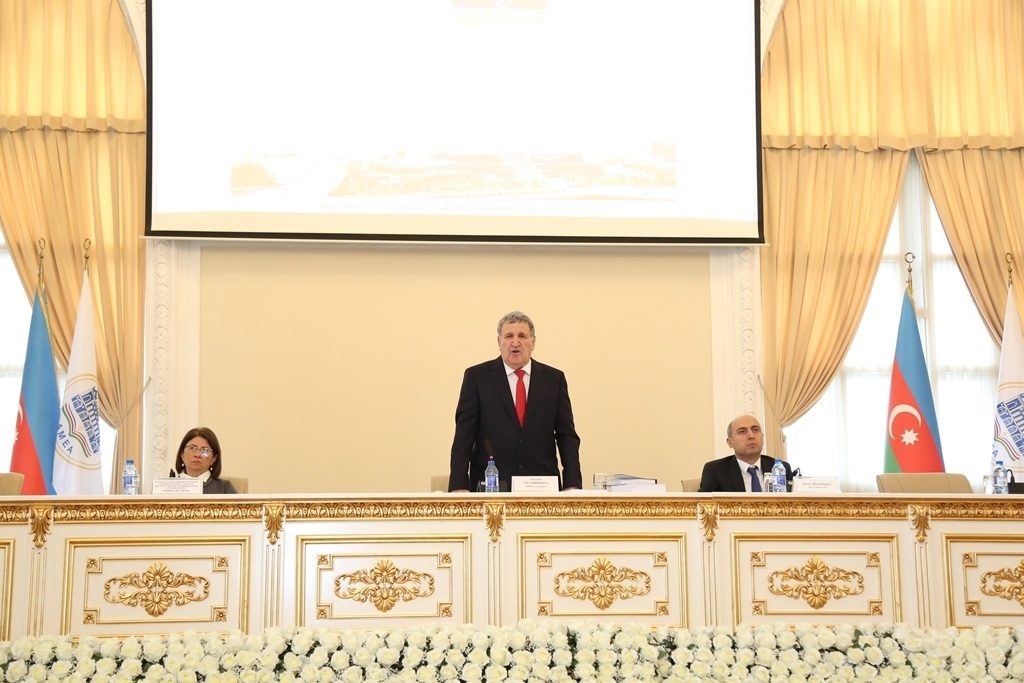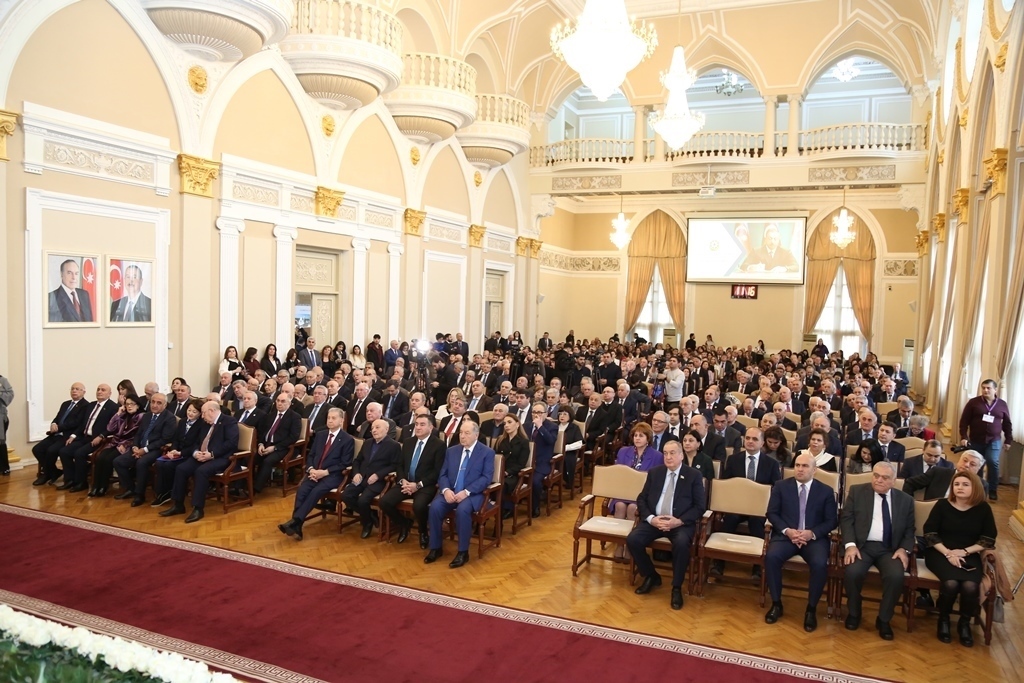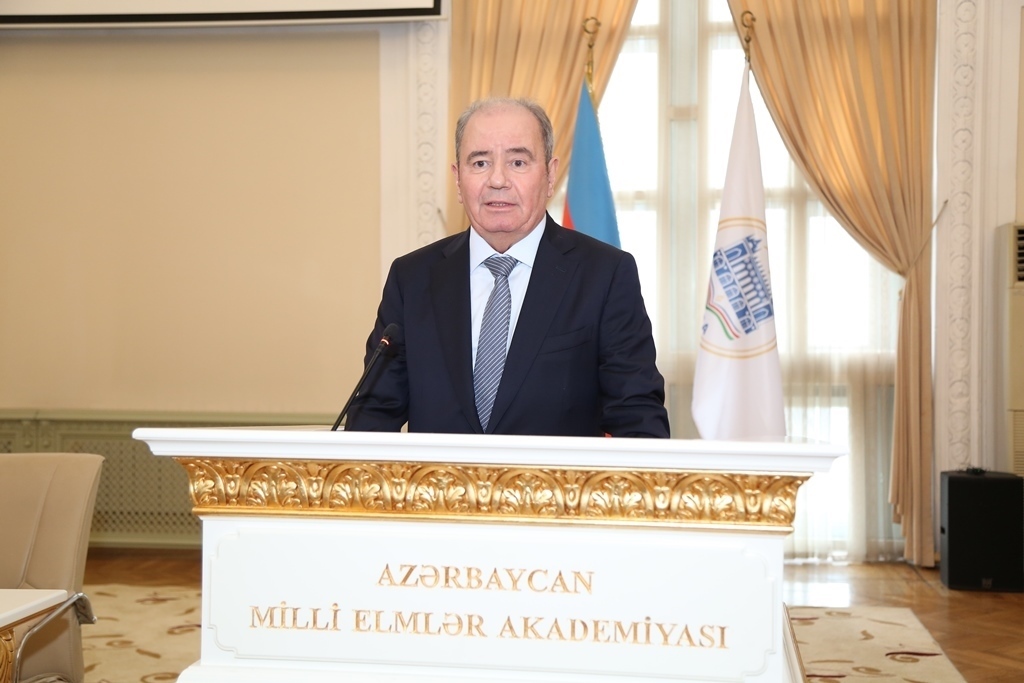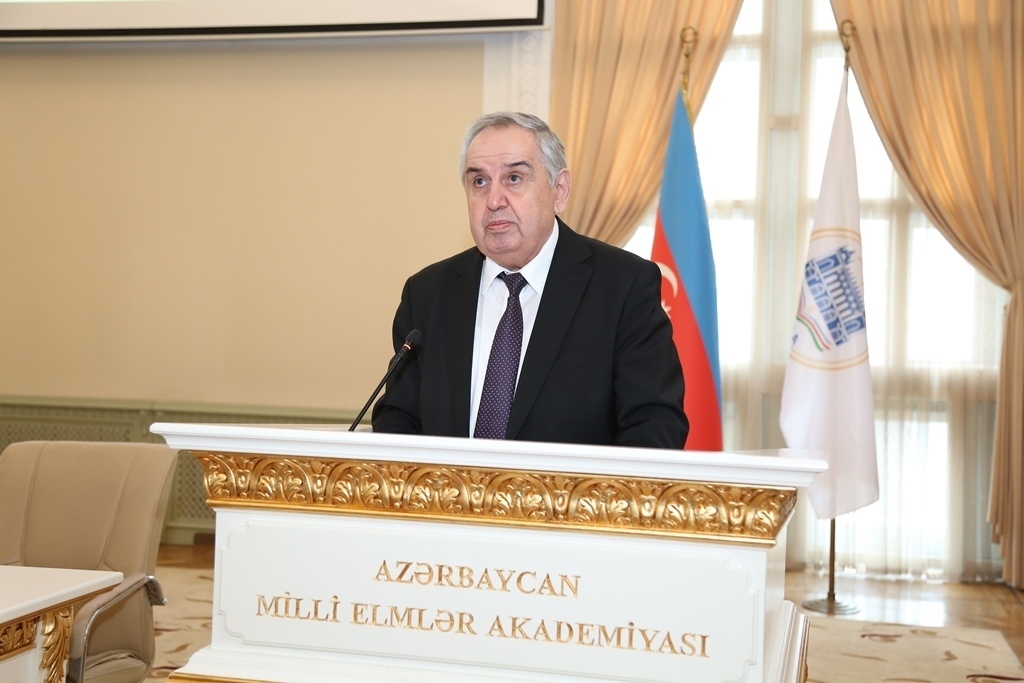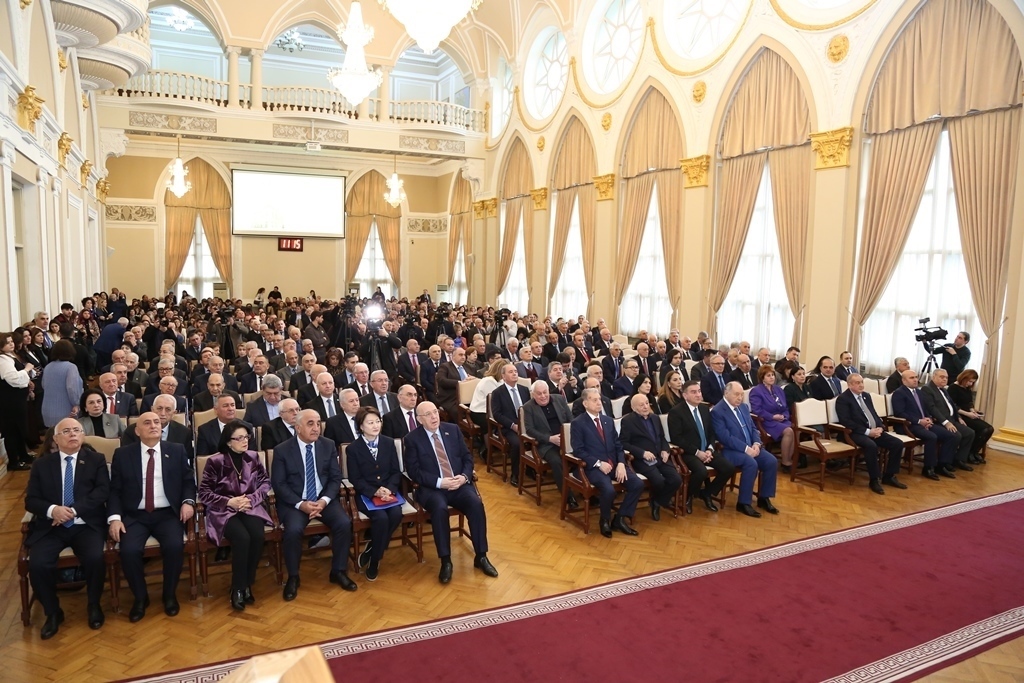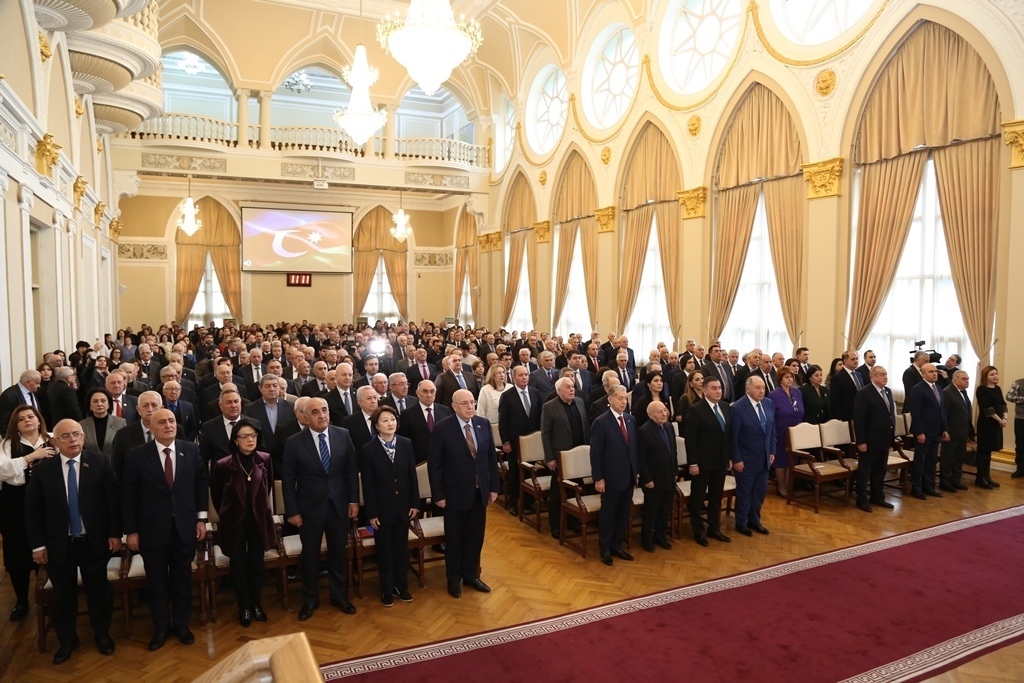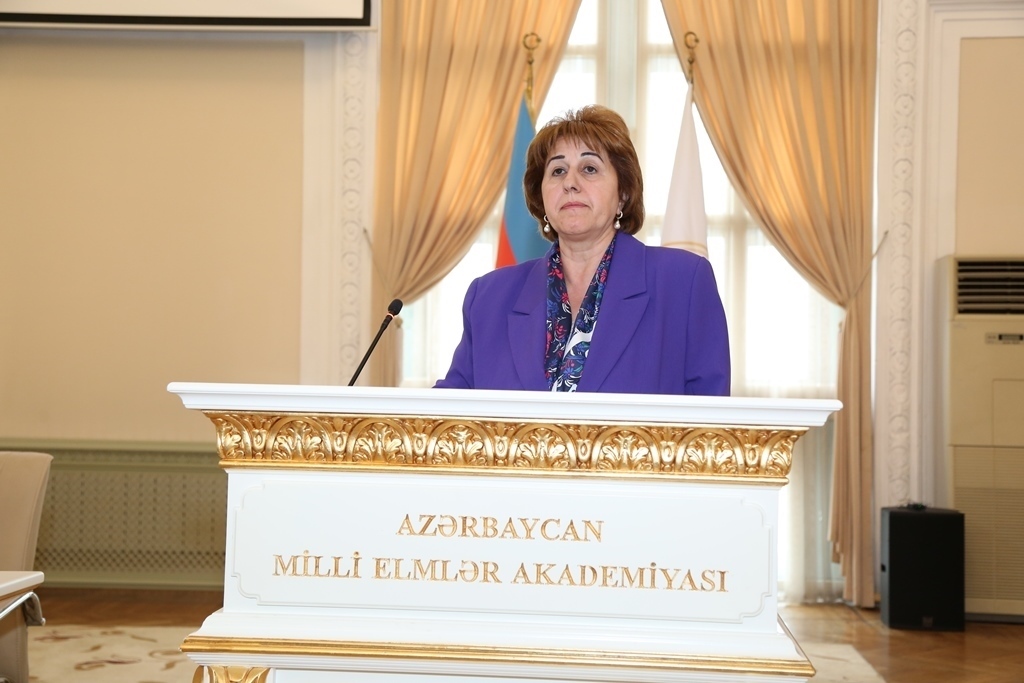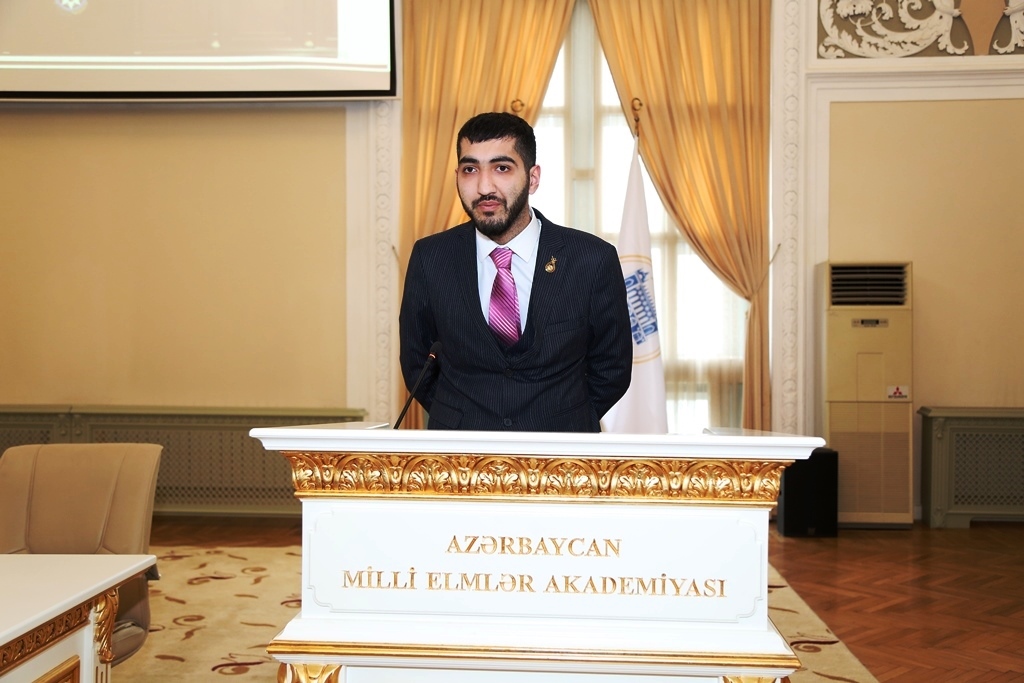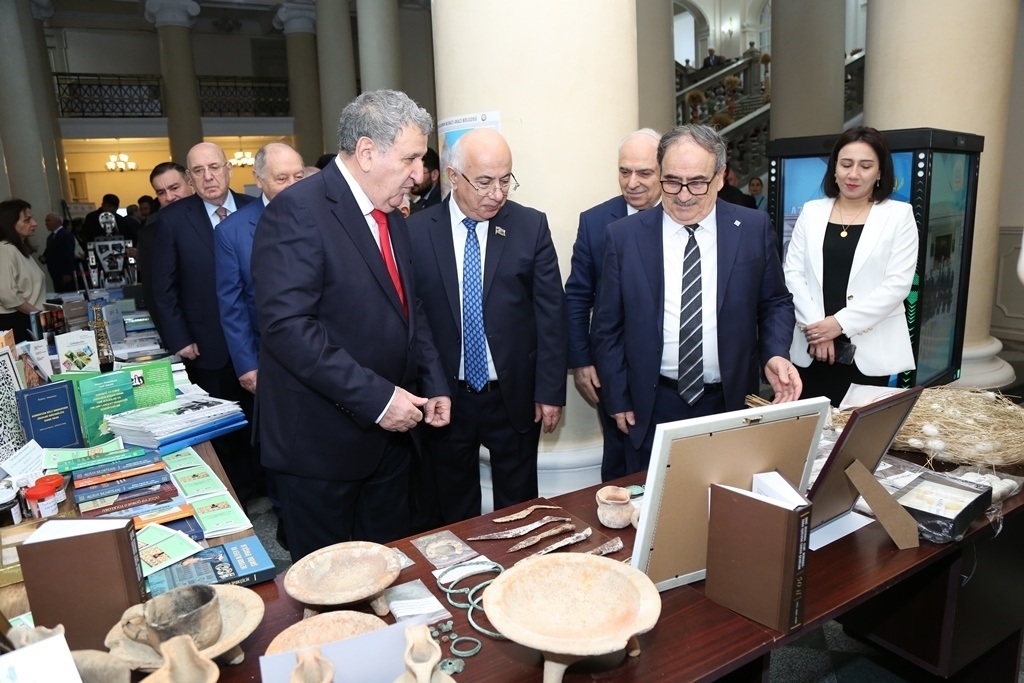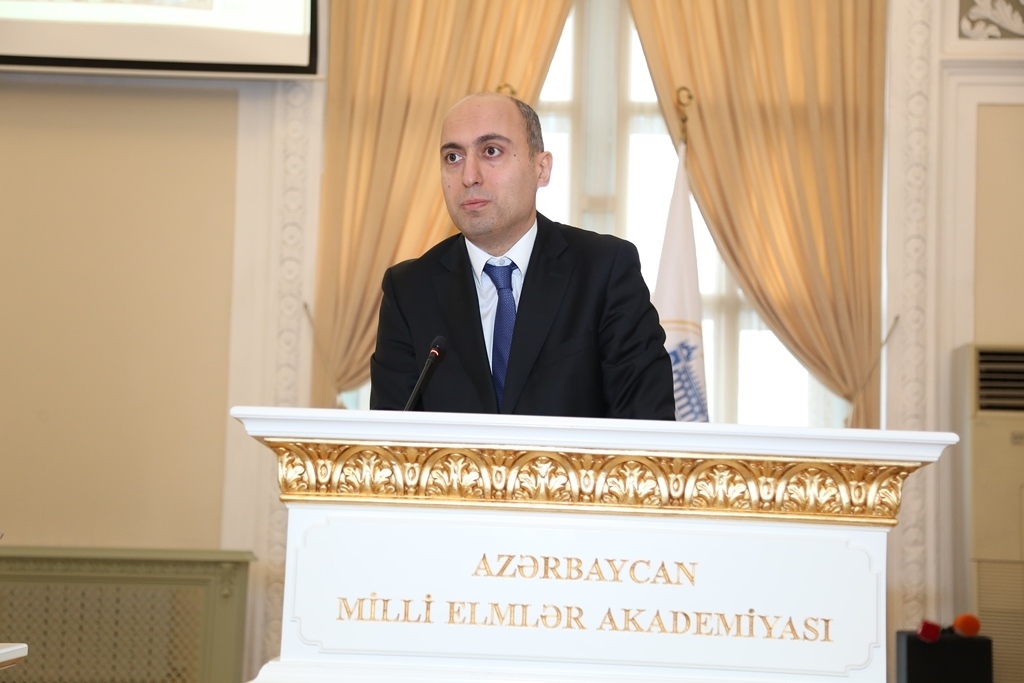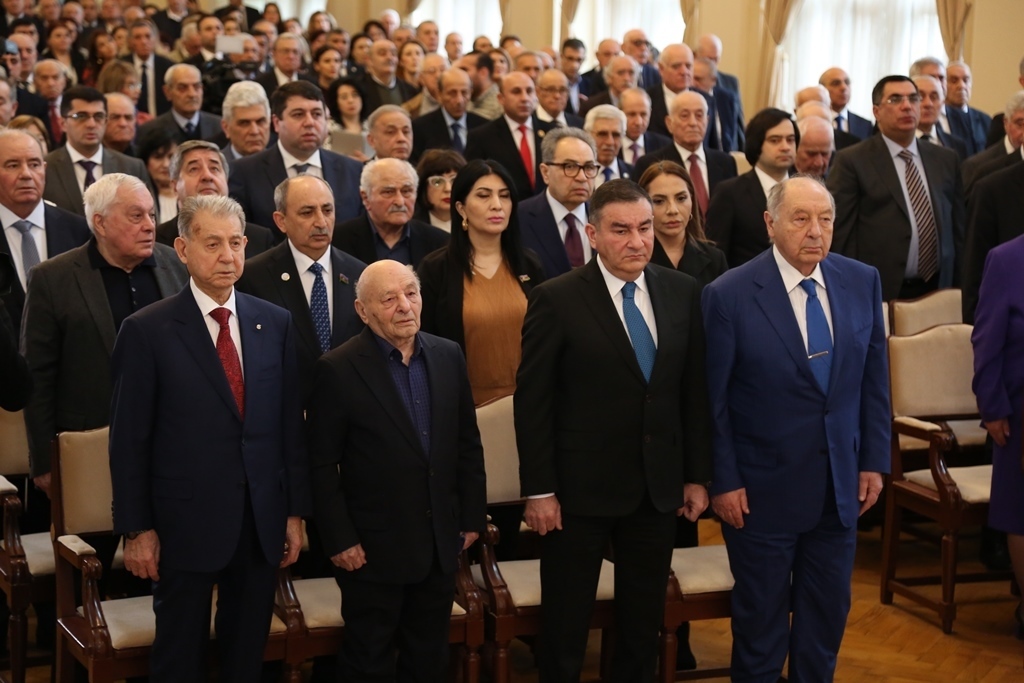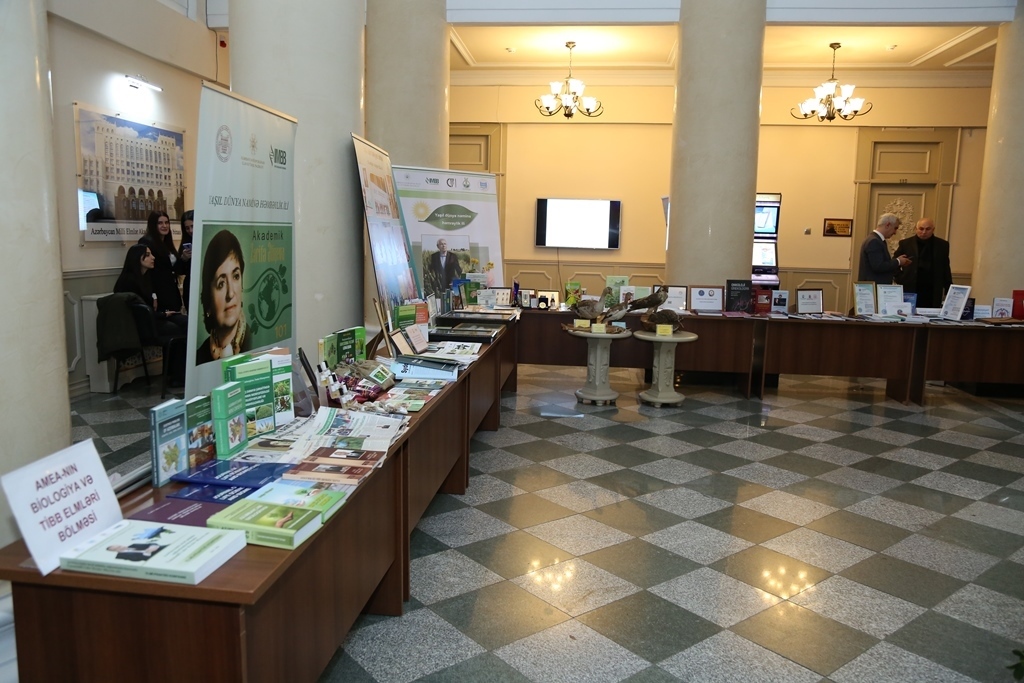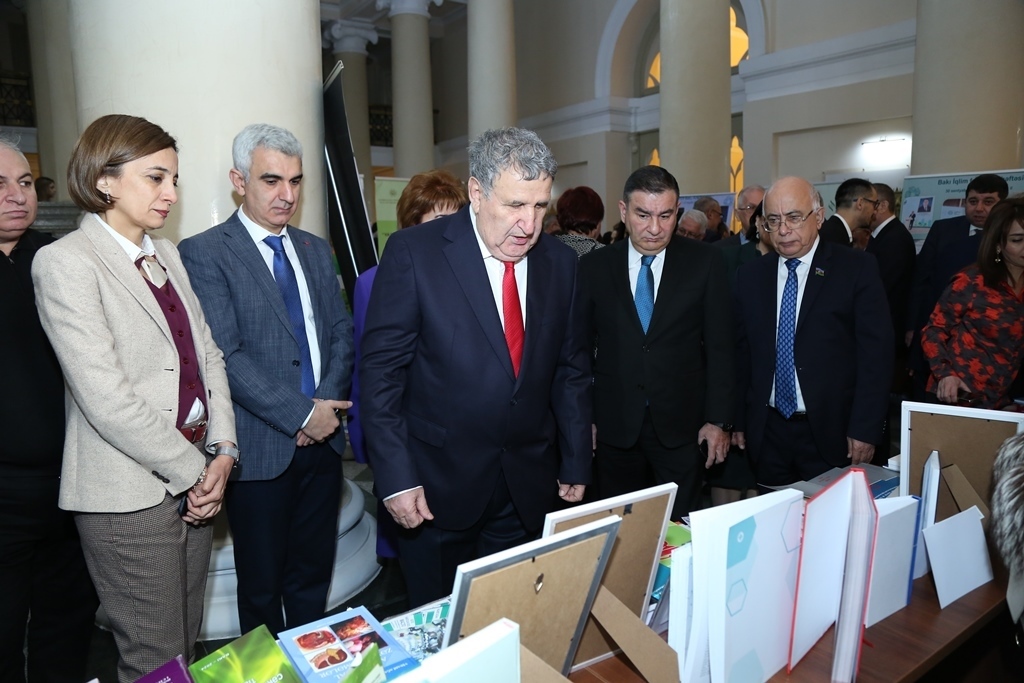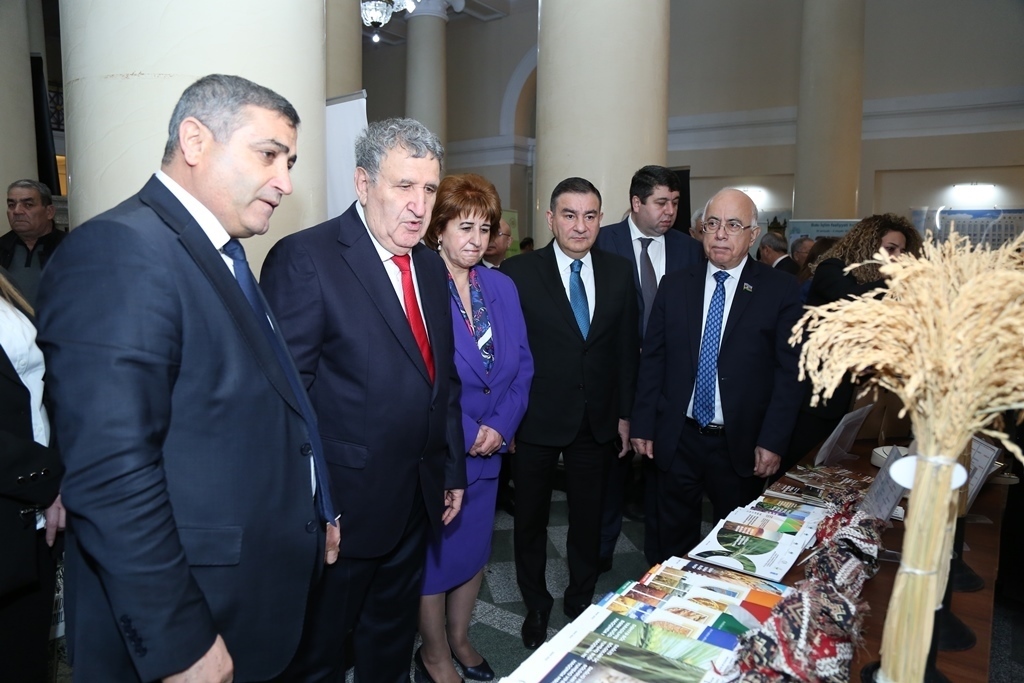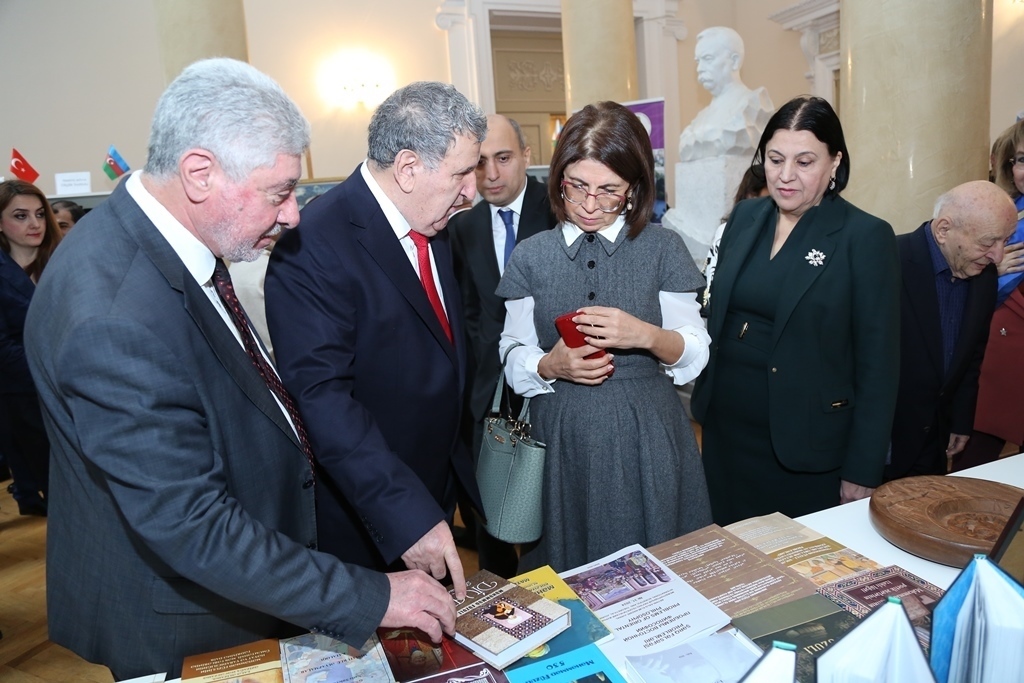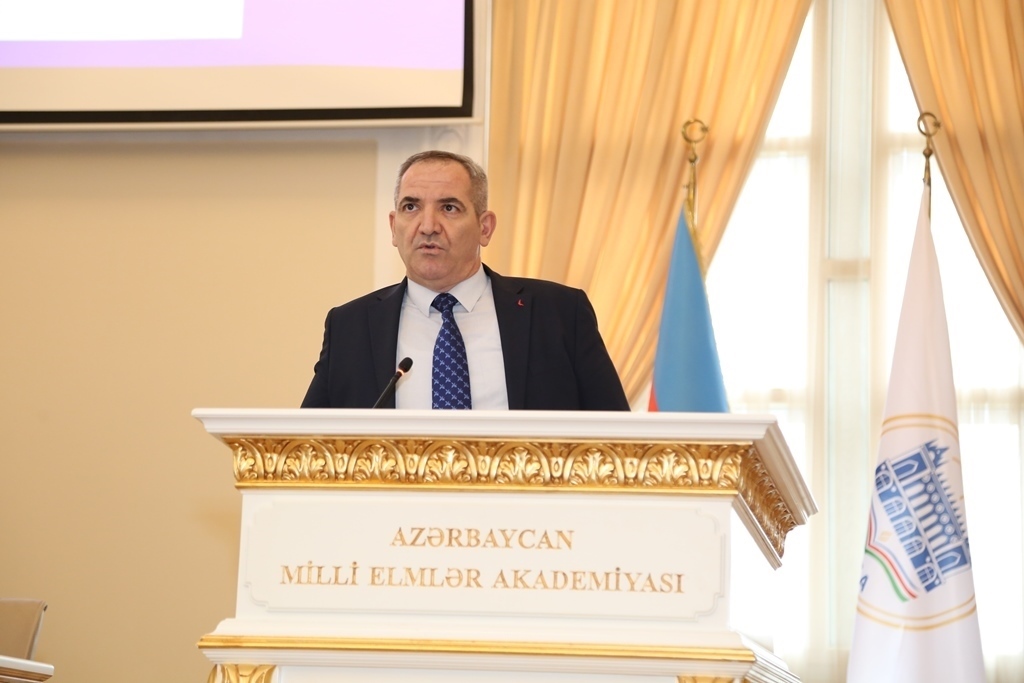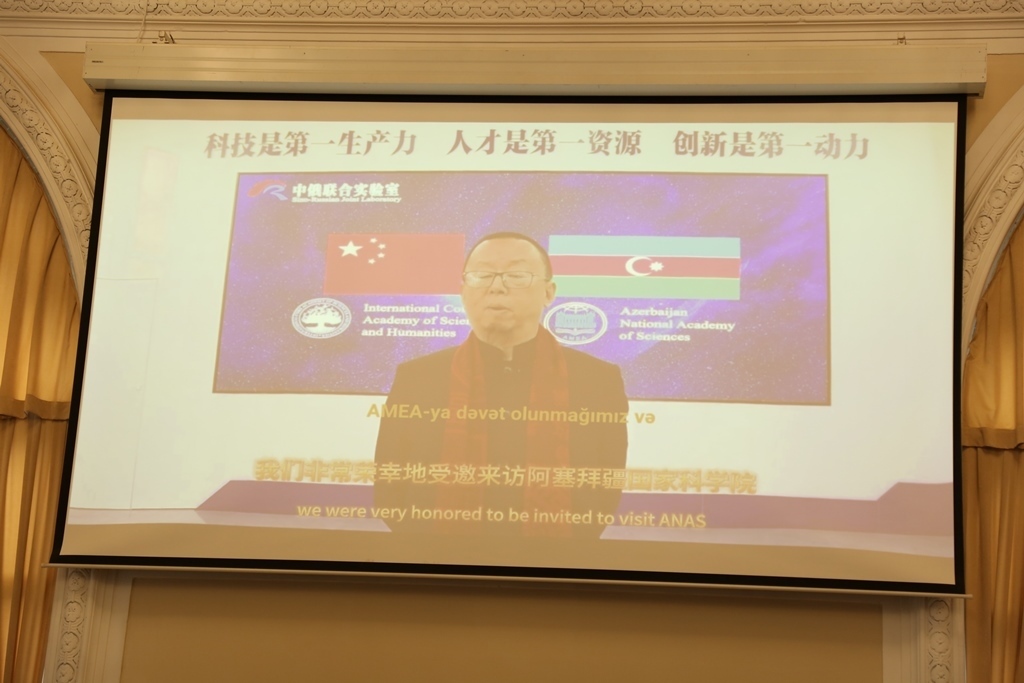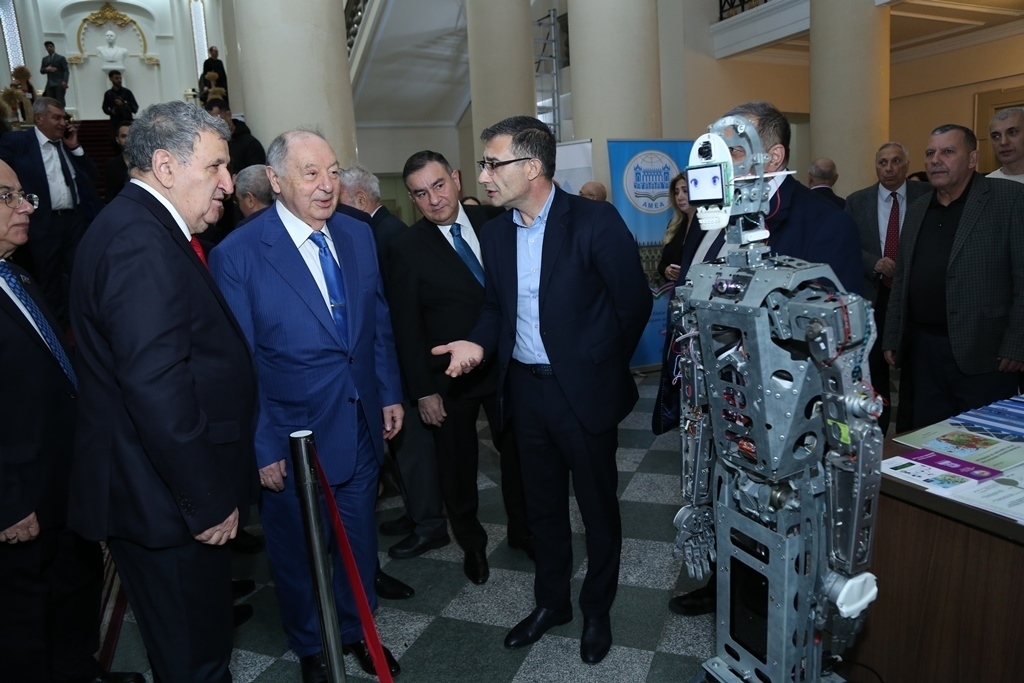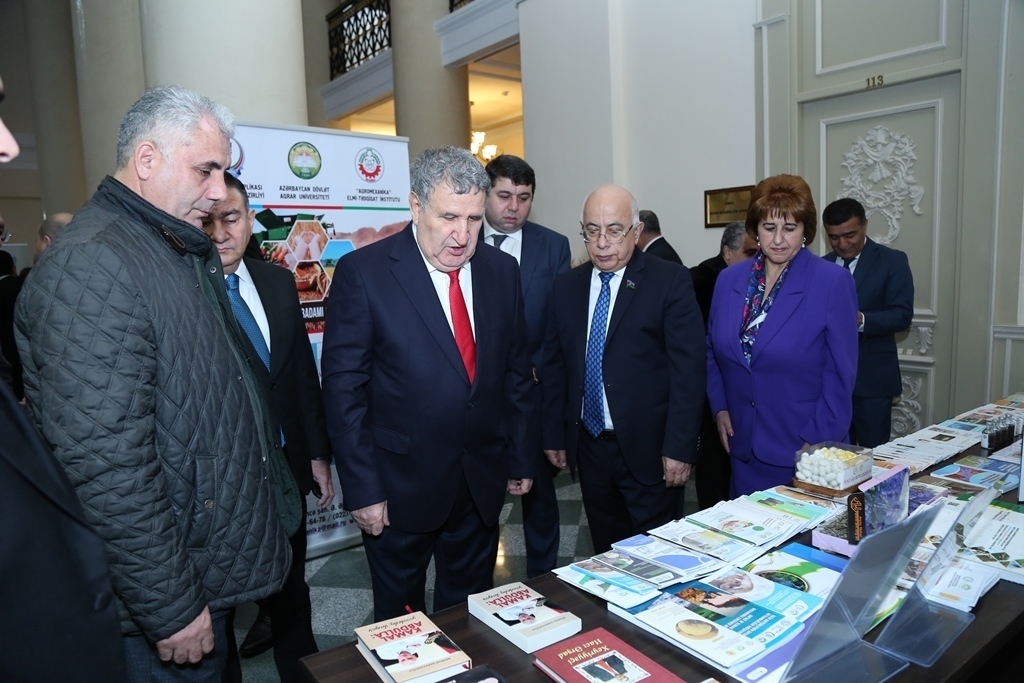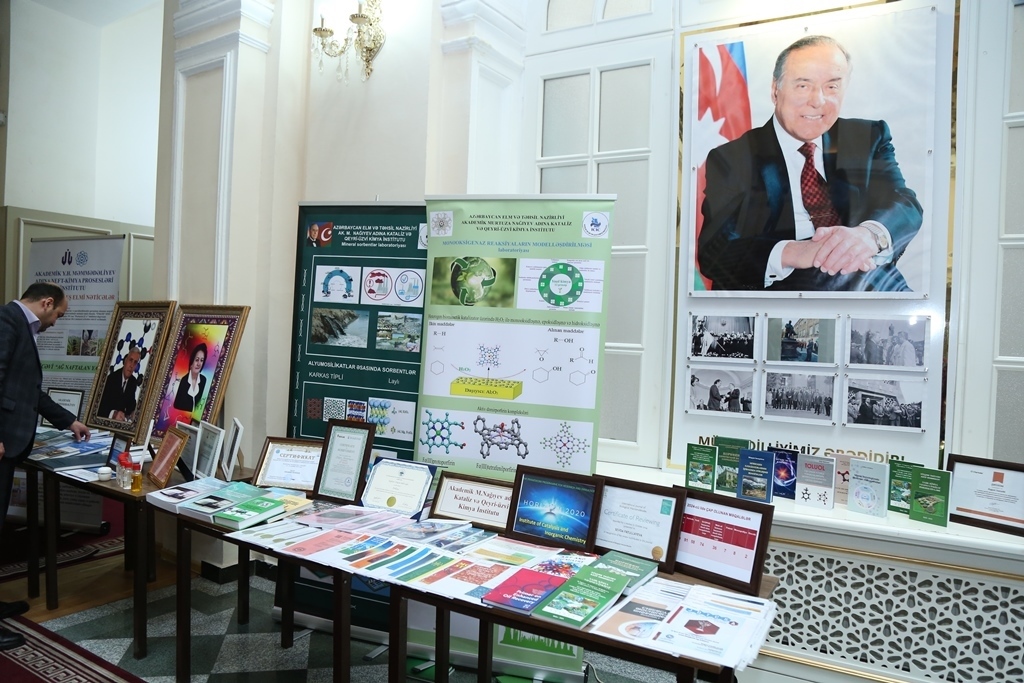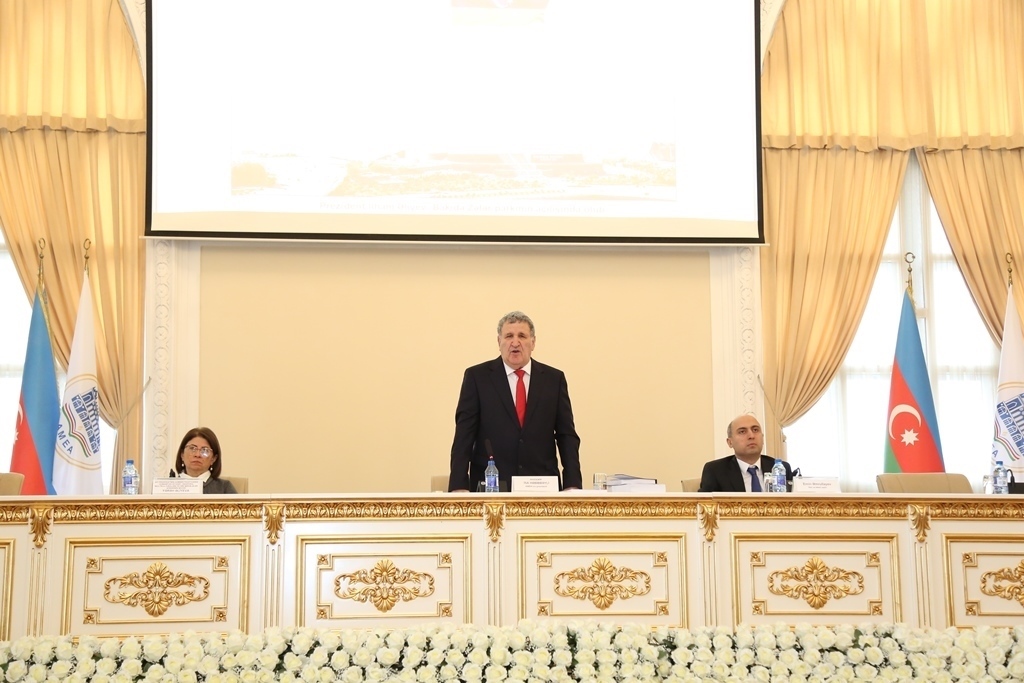
The General Assembly of the Azerbaijan National Academy of Sciences (ANAS) was held in the Presidium building of ANAS on February 20.
The event was attended by Farah Aliyeva, Head of the Department of Humanitarian Policy, Diaspora, Multiculturalism and Religious Issues of the Presidential Administration of the Republic of Azerbaijan; Emin Amrullayev, Minister of Science and Education; Anar Isgandarov, Chairman of the Science and Education Committee of the Milli Majlis; Famil Mustafayev, Chairman of the Supreme Attestation Commissionunder the President of the Republic of Azerbaijan; Mehriban Imanova, Executive Director of the Azerbaijan Science Foundation; Aktoty Raimkulova, President of the International Turkic Culture and Heritage Foundation; Academician Shahin Mustafayev, President of the International Turkic Academy; Professor Muzaffer Şeker, President of the Turkish Academy of Sciences (TÜBA) (online); Professor Li Lei, a member of the Executive Council of the Hong Kong Core Academy of China, (online); members of the Presidium of ANAS; members of parliament; active and corresponding members of ANAS; directors of scientific institutions and organizations of ANAS; rectors of higher education institutions; and the authors of significant scientific achievements in Azerbaijan in 2024.
At the beginning, the attendees viewed an exhibition of scientific achievements dedicated to the results of 2024.
The meeting was opened by the President of ANAS, Academician Isa Habibbeyli, who presented the agenda of the General Assembly.
Then, the National Anthem of the Republic of Azerbaijan was played.
Next, the memory of the distinguished scientist, corresponding member of ANAS Rufat Mirgasimov was honored with a minute of silence.
At the General Assembly, the President of ANAS, Academician Isa Habibbeyli presented a report titled “From Fundamental Reforms in the Academy of Sciences to the Development Concept and Roadmap”.
Academician Isa Habibbeyli said that March 27, 2025 will mark the 80th anniversary of the establishment of the Azerbaijan National Academy of Sciences. The Academy of Sciences of the Azerbaijan SSR went through many difficult and honorable stages to reach the present day.
The head of ANAS mentioned that the years 1969-1982, when the prominent statesman Heydar Aliyev led the Azerbaijan Soviet Republic, were a period of revival for the Academy’s development in our country. He added that in the subsequent years, from 1983 to 1993, as in other fields of Azerbaijani society, a gradual period of decline and deterioration was observed in the Academy of Sciences and eventually, during 1991-1993, these processes reached a crisis point. The period from 1993, when National Leader Heydar Aliyev returned to power, until 2003, is remembered as the period of reorganization and development of the National Academy of Sciences.
According to the academician, the years during which President Ilham Aliyev continues to lead the Republic of Azerbaijan with great success can be divided into two phases in terms of the development of the Academy: the first phase, the period of modernization of the Academy (2003-2022), and the second phase, the stage of renewal and reforms that began in October 2022.
The head of ANAS said that the principles of Soviet periodization based on Karl Marx’s theory of formations were abandoned, and a periodization concept based on the development of civilizations, the political-historical realities of our country, and the idea of Azerbaijanism were developed. The centuries-old common stages of the development of Azerbaijani literature, history, national culture, and the Azerbaijani language were determined. In complete contrast to the Soviet methodology of forgetting the political and historical figures, one of the main tasks of our science is to thoroughly study the lives, struggles, and ideas of historical figures, rulers, commanders, and the national heroes who were previously called fugitives and bandits.
For the first time in the history of Azerbaijani science, the concept of national philosophy has been introduced into the academic discourse, and examples of the study of idealist philosophy, alongside materialist philosophy, have emerged. The creation of encyclopedias in various fields has been initiated at the Academy, and practical steps have been taken towards the preparation of the “Heydar Aliyev Encyclopedia” and the “Western Azerbaijan Encyclopedia”.
The academician touched upon international relations issues of ANAS, saying that for the first time in its 80-year history of development, the Academy became a member of organizations such as the International Science Council, the InterAcademy Partnership (IAP), and the Association of Academies and Societies of Sciences in Asia (AASSA) and it is represented as an institution with the status of scientific organization with voting rights in the elections of the governing bodies of the General Assemblies of these institutions, gaining the opportunity to closely study global developments and new challenges in the field of science.
In addition, in light of the President Ilham Aliyev’s declaration of prioritizing relations with the Turkic world, a Department of Philosophical Heritage and Contemporary Philosophy of Turkic peoples was established at the Institute of Philosophy and Sociology, a Department of the History of Turkic Art and Cultural Heritage was created at the Institute of Architecture and Art, and a Department for the Study of Turkic Manuscripts was launched at the Institute of Manuscripts. “Mahmud Kashgari’s “Diwan Lughat al-Turk”, the foundational book of the Turkic world, was translated by Khalid Said Khojayev. This rare manuscript was discovered after 86 years. The publication of this work in three volumes and its special presentation at the UNESCO Headquarters together with Turkologists from the countries of the Turkic world is one of the most remarkable events in the 80-year history of the Academy.”
Additionally, the electronic movement was started during the period of renewal and reforms at ANAS. Through the “Electronic Academy” department created within the Presidium administration of ANAS, the electronic databases of 21 out of 31 scientific journals of the Academy’s scientific divisions and research institutes have been made available. For the first time in the Academy’s history, the Human Resources Scientometric Database, the Digital Scientific Information Resources System were established, forming a mechanism for determining the scientometric reality and citation indicators of each employee’s scientific activity. Steps have been taken in the development of the Azerbaijani language corpus. The SUFI operational robot model has been created based on the System for Processing Words with Universal Functionality.
Academician Isa Habibbeyli said that additional measures are being implemented to use artificial intelligence and digital technologies in the fields of Humanities and Social Sciences, based on the requirements set forth by the Digital Development Concept approved by the President of the country.
At the end of his report, Academician Isa Habibbeyli underlined that Azerbaijani scholars, including the staff of the National Academy of Sciences, will continue to wholeheartedly support the policy of the President of Azerbaijan and will dedicate all their efforts and capabilities to fulfilling the tasks set before them.
Then, the Minister of Science and Education of the Republic of Azerbaijan, Emin Amrullayev made a speech at the General Assembly. He said that the essence of the two-tier doctoral programs should be changed fundamentally, and a credit-based and structured doctoral level should be developed as soon as possible. The minister mentioned that the actual number of admissions (for doctoral programs) presented by institutions to the Ministry of Science and Education exceeds the number of those who defend their dissertations. He also noted that certain steps have been taken in collaboration with the Higher Attestation Commission to evaluate the activities of scientific research institutions.
“We have started to seriously monitor the connection between academic degrees and scientific activity. We pay more attention to the subsequent activities of individuals with scientific degrees, rather than their status. A scholar who earns an academic title at the age of thirty or thirty-five should not use this title for the rest of his life. All of this will be reflected in the new state program, which is already at the approval stage”-said Emin Amrullayev.
The minister also emphasized the importance of incentivizing scholars in the social and humanitarian fields who conduct research related to Azerbaijan. “Funding based on the results of scientific activity is the most equitable system. The allocation of various projects and grants to institutions and researchers focused on different scientific activities is planned”-he underlined.
Emin Amrullayev also noted that result-based funding has already been introduced at the newly launched Karabakh University.
He highly praised the progress of higher education institutions in rankings over the past two years. Speaking about the recent changes and reforms in the field of science in Azerbaijan, the minister also touched upon the connections between higher education and scientific institutions.
Emin Amrullayev underlined that as a result of the reforms and comprehensive measures implemented in recent years, science and education have entered a qualitatively new stage of development, scientific productivity has increased, positive trends have been observed, and the country has advanced in international rankings.
Aktoty Raimkulova, President of the International Turkic Culture and Heritage Foundation greeted the attendees of the General Assembly of ANAS on behalf of the organization she leads and spoke about the foundation’s activities. She said that the Azerbaijan National Academy of Sciences is one of the significant partners of the foundation and that various conferences and seminars have been organized in collaboration with the Academy.
Aktoty Raimkulova underline that it is possible to create a large and rich library from the books published by ANAS, dedicated to prominent scholars and artists of the Turkic world. She also expressed her gratitude to the Academy’s leadership for the presentation of the first encyclopedic work of the Turkic world, “Diwan Lughat al-Turk”, at the UNESCO Headquarters in Paris. She added that currently the International Turkic Culture and Heritage Foundation and ANAS are carrying out joint preparatory activities to organize the 100th anniversary of the First Turkological Congress, which took place in Baku in 1926, at a high level.
Speaking about the prospects of further cooperation and an upcoming international scientific conference on the art of ashugs, Aktoty Raimkulova invited Azerbaijani scientists to actively participate in the conference.
Expressing confidence that the close cooperation of scientists from Azerbaijan, Türkiye, Uzbekistan, Kyrgyzstan, Kazakhstan, and Turkmenistan will further strengthen mutual relations and expand cultural and scientific initiatives, the president of the International Turkic Culture and Heritage Foundation wished success to all researchers in their scientific activities.
Following this, Academic Secretary of ANAS, Academician Arif Hashimov presented a report on “The Scientific Report of the 2024 Academic Year”.
Academician Arif Hashimov said that 2024, which was accompanied by several achievements in terms of the socio-economic and cultural-spiritual development of the Republic of Azerbaijan, was successful also for Azerbaijani science, including the Azerbaijan National Academy of Sciences. He underlined that the reform-oriented measures started at ANAS since the end of 2022 have continued consistently and comprehensively in 2024, just as in 2023. As a result, the Academy’s structure has undergone a fundamental modernization, the role of science in the implementation of the state’s socio-economic, cultural-spiritual, and ideological policy has been significantly strengthened, the Academy’s human resources potential has been optimized as much as possible, international scientific relations have been expanded, and the Academy’s reputation has significantly increased both at the international level, especially in the Turkic world, and within the country.
“The initial phase of reforms in the Academy has yielded significant results, creating a favorable environment for transitioning to a new quality of management and activity. In 2024, the scientific institutions and organizations of ANAS actively participated in the implementation of the decrees and orders of the President of the Republic of Azerbaijan. Additionally, ANAS took part in the realization of 11 state programs related to the research, preservation, and promotion of the country’s economy, art, culture, literature, history, and language”-said Arif Hashimov.
He mentioned that in 2024, significant scientific results achieved across the country were collected from all scientific and higher education institutions of the republic, discussed in the relevant divisions, and systematized for further discussion at the General Assembly of ANAS. During the reporting year, 1,787 scientific research works based on 514 topics of 197 problems were conducted across the scientific institutions of the scientific divisions of the Azerbaijan National Academy of Sciences.
In 2024, researchers working in scientific institutions published 521 books and monographs, 118 textbooks, and 9,245 articles and theses, of which 3,561 were published abroad (1,192 of which were in impact factor journals included in the Web of Science and Scopus databases). The works of the researchers were cited 45,507 times.
Academician Arif Hashimov said that 2024 was declared as the “Green World Solidarity Year” in the Republic of Azerbaijan, and in this regard, ANAS carried out large-scale events. A total of 71 events were organized by the scientific divisions, institutions, and organizations of the Academy, 30 books and 32 articles were prepared.
He also underlined that during the 29th session of the Conference of the Parties (COP29) to the United Nations Framework Convention on Climate Change, held in Baku, the President of ANAS, members of the Presidium, heads and specialists of scientific institutions and organizations delivered reports at local and international meetings, published relevant articles, and participated in discussions and roundtables. A meeting dedicated to the results of COP29 was held at the Presidium of ANAS, where relevant decisions were made.
Academician Arif Hashimov also mentioned that various research are being conducted by our scientists in the liberated from occupation Karabakh and Eastern Zangezur, which have been declared green energy zones, as well as in the Nakhchivan Autonomous Republic.
One of the key directions of scientific and scientific-organizational activities carried out at ANAS during the reporting year was events related to Western Azerbaijan.
At the end of his speech, the academician noted that the research conducted in 2024 and the significant scientific results achieved in the institutions of the Azerbaijan National Academy of Sciences, as well as in other scientific and higher education institutions of the republic can be highly appreciated.
The head of the Working Group, Director of the Department of Science and Education of the Presidium of ANAS, Doctor of Philology Sarkhan Khaveri provided information about the “Concept for Development and Roadmap of ANAS”. He noted that the “Concept for Development and Roadmap of the Azerbaijan National Academy of Sciences for 2025-2030” presented for discussion, consists of two main sections.
The first section covers global challenges, new development trends of world science, emerging trends of social and humanitarian sciences, the justification of the Concept, its goals, objectives, and tasks, the historical development chronology of the Academy and its new legal status, and the main directions of the Roadmap which focus on scientific and organizational activities. In addition, it includes the time sequence of implementing the Concept, the execution and mechanisms for controlling its implementation, the monitoring system, and outcome indicators. Sarkhan Khaveri mentioned that, overall, the first section of the Concept can be considered as a scientific-philosophical framework document for organizing the development processes at the Academy effectively and consistently over the next five years.
Sarkhan Khaveri said that the necessity of developing and implementing the Concept is explained by three important factors at the global, regional, and local levels.
The first factor is about the global development trends of the modern world, the second factor is related to the new geopolitical realities of our country and the region, and the third factor is connected with the new stage of development of science in the republic.
It was noted in the report that the goals derive their legal basis from the new Charter of the Academy, approved by the President, and their moral and ethical accountability from the Academy’s 80-year history and the exceptional role it has played in the social progress and the history of public opinion of the Azerbaijani people.
Sarkhan Khaveri stated that the second section of the Concept is the “Roadmap,” where numerous and diverse measures aimed at achieving the goals are reflected.
The scholar noted: “The main philosophical platform of the Concept is the foresight methodology-forecasting the future. Based on this methodology, the Concept examines possible scenarios for the development of science in the next five years, identifies strategies to be prepared for them, and develops mechanisms for their implementation. Forty structures are involved in the implementation of the “Concept for Development and Roadmap”: 6 scientific divisions, 2 regional divisions, 10 research institutions, 2 regional scientific centers, 4 organizations, and 16 departments of the Presidium of ANAS”.
The Vice President of ANAS, Academician Irada Huseynova, Director General of the Institute of Control Systems of the Ministry of Science and Education, Academician Ali Abbasov, and winner of the Youth Award of the President of the Republic of Azerbaijan, doctoral student of the Institute of Archaeology and Anthropology, Mirjavid Agalarov made speeches at the event. Additionally, online speeches were presented by Professor Muzaffer Şeker, President of the Turkish Academy of Sciences (TÜBA) and Professor Li Lei, a member of the Executive Council of the Hong Kong Core Academy of China.
In the end of the General Assembly, the “Concept for Development and Roadmap of the Azerbaijan National Academy of Sciences for 2025-2030” and the decision of the Assembly of ANAS were approved.



